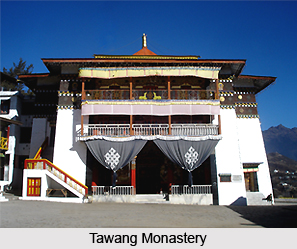 History of Tawang district is mysterious and uncertain, though it was believed to be a portion of Tibet in the medieval age. Regional tribal kings used to rule the district at times. During 1873, this area was announced as off-limits and the region around Tawang became a cause for political dispute between the countries of China and India, following the Indian independence in the year 1947. In 1962, the Chinese army had invaded the district of Tawan, though eventually they retreated.
History of Tawang district is mysterious and uncertain, though it was believed to be a portion of Tibet in the medieval age. Regional tribal kings used to rule the district at times. During 1873, this area was announced as off-limits and the region around Tawang became a cause for political dispute between the countries of China and India, following the Indian independence in the year 1947. In 1962, the Chinese army had invaded the district of Tawan, though eventually they retreated.
The name Tawang was obtained from the gigantic Tawang Monastery which is based here, on the summit of a ridge, surrounded by tall columns of clouds and mist. This monastery is more than 400 years old and provides shelter to over 700 monks. It is believed to be amongst the most ancient and the grandest monasteries in Asia and supervises 17 Gompas and nunneries. Merag lama Lodre Gyatso had founded this monastery in 1681. The term `Ta` implies horse while `Wang` implies chosen. According to a popular legendary account, the place of this monastery was chosen by Merag Lama`s horse. The legend states that once when the Lama was praying inside a cave seeking divine intervention in aiding him to select an appropriate spot for constructing the monastery, his horse went missing. Finally, the horse was found at the summit of a hill. Believing this to be a divine miracle, the Lama decided to erect the Tawang Monastery at this exact spot. This monastery is also known as Galden Namgey Lhatse.
Before this spectacular monastery had been created, the Monpas were believed to have been the traditional inhabitants of Tawang district. They had ruled the Mon kingdom, which extended till Sikkim, right from Tawang district. However, eventually, the Mon kingdom was grabbed by the administrators of Tibet and Bhutan and included under their jurisdiction. Tawang was separated from Tibet after the independence of India from the British Raj. The army of China attacked Tawang in 1962, and during this time they demolished some parts of the Tawang Monastery. The nationalist troops of China controlled this district for several months. After the withdrawal of the Chinese armies, Tawang was again included under the administrative control of India. In the year 1984, Tawang district was severed from West Kameng District. Presently, Tawang district is an interesting tourist destination in India, particularly due to the existence of the Tawang Monastery.



















